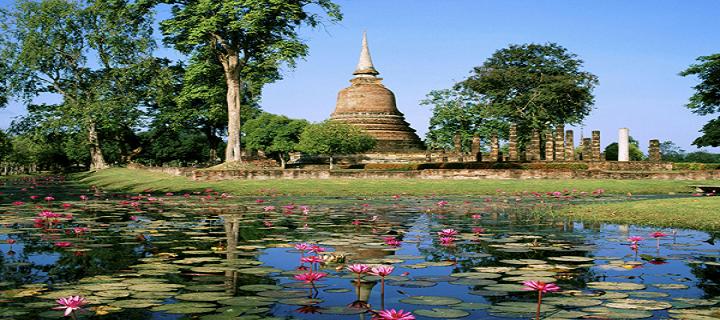WELCOME TO THAILAND!
 Welcome to the land of smiles, a country with dazzling scenic mountains, waterfalls, golden beaches , gardens, tropical rainforests and magnificent temples, renowned for a wide range of activities
from elephant riding, to scuba diving, from snorkeling to beach fun!
Thailand is known to have a golden glow not only because the land is
rich in the golden metal but also because of the glitter that the
country spreads from its sandy beaches, fertile lands and warm hearted
culture. Today the country is also speeding high with fabulous shopping
malls, great nightlife and a fast paced city life
Welcome to the land of smiles, a country with dazzling scenic mountains, waterfalls, golden beaches , gardens, tropical rainforests and magnificent temples, renowned for a wide range of activities
from elephant riding, to scuba diving, from snorkeling to beach fun!
Thailand is known to have a golden glow not only because the land is
rich in the golden metal but also because of the glitter that the
country spreads from its sandy beaches, fertile lands and warm hearted
culture. Today the country is also speeding high with fabulous shopping
malls, great nightlife and a fast paced city life
Thailand offers an unbeatable combination of Eastern exoticism and
Western modernism that brings ten million people a year to the country's
gorgeous beaches and magical countryside.
The Thai people are renowned for being friendly and hospitable, in
spite of the massive influx of foreign visitors over the last few years.
Billed as the "Land of Smiles", Thailand has an extraordinary diversity
of flavours and sights to experience. A lot of people are pleasantly
surprised at how modern the country is, with its up-to-date facilities.
Nowhere is this more evident than in the vibrant capital Bangkok, where a
burgeoning 21st century city is growing around centuries-old relics and
icons.
Thailand is celebrated for its outstanding beaches from the secluded
sands of Koh Chang near Cambodia, to the world-famous full-moon parties
of Koh Phang-Nga and the luxury of Phuket's beach resorts. And of course
there is the wonderfully rich and accessible culture to explore, from
the temples of Bangkok to the hill tribes of Chiang Mai.
Thailand also remains an inexpensive destination with something to
offer travellers of every budget - and the tourists that descend on the
country are often every bit as varied and interesting as the colourful
inhabitants.
Add to all this the delectable food and a perfect climate and you too
will fall in love with this exciting and hospitable country.


 Sankamphaeng
Hot Springs are located in a scenic area surrounded by trees and lush
green hills, only 36 km from Chiang Mai. The sulphur rich water is said
to be curative and good for your skin and blood circulation. There is a spa complex with an open-air pool and several small bathhouses.
Sankamphaeng
Hot Springs are located in a scenic area surrounded by trees and lush
green hills, only 36 km from Chiang Mai. The sulphur rich water is said
to be curative and good for your skin and blood circulation. There is a spa complex with an open-air pool and several small bathhouses.
 The
ancient city of Wiang Kum Kam is situated between the river Ping and
the Lamphun highway, south of Mahidol Road. The city was founded by
The
ancient city of Wiang Kum Kam is situated between the river Ping and
the Lamphun highway, south of Mahidol Road. The city was founded by  Chiang
Dao Caves are located 72 km north of Chiang Mai on route 107. The cave
complex is made up of five interconnected caves extending more than 10
km into Chiang Dao Mountain. Two of the caves are easily explored as
they are illuminated by electric lights. The other caves can be explored
with the aid of local guides with lanterns.
Chiang
Dao Caves are located 72 km north of Chiang Mai on route 107. The cave
complex is made up of five interconnected caves extending more than 10
km into Chiang Dao Mountain. Two of the caves are easily explored as
they are illuminated by electric lights. The other caves can be explored
with the aid of local guides with lanterns.
 Chiang
Mai Zoo is located at the foot of Doi Suthep Mountain and surrounded by
a hilly terrain. The Zoo houses more than 7,000 animals. The Zoo is
very popular among both Thai and foreign visitors and the main
attraction is the pandas from China.
Chiang
Mai Zoo is located at the foot of Doi Suthep Mountain and surrounded by
a hilly terrain. The Zoo houses more than 7,000 animals. The Zoo is
very popular among both Thai and foreign visitors and the main
attraction is the pandas from China.